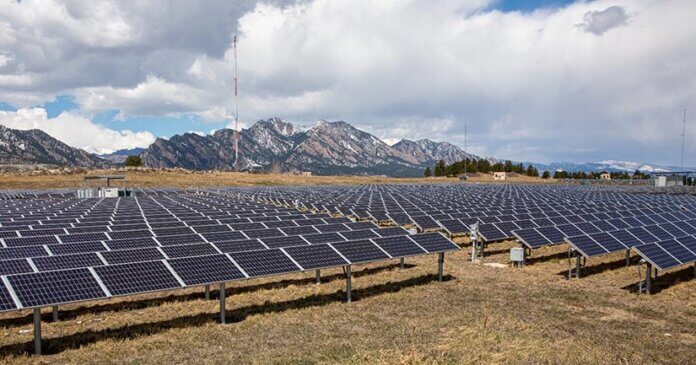
In their new paper in Joule, “Embodied Energy and Carbon from the Manufacture of Cadmium Telluride and Silicon Photovoltaics,” National Renewable Energy Laboratory (NREL) researchers Hope Wikoff, Samantha Reese and Matthew Reese focus on the two dominant deployed photovoltaic (PV) technologies: silicon (Si) and cadmium telluride (CdTe) PV. These green technologies help reduce carbon emissions and meet global decarbonization goals – but their manufacturing processes can themselves result in greenhouse gas emissions.
“Green technologies are awesome, but as we are working to scale them up to an incredible magnitude, it makes sense to take a close look to see what can be done to minimize the impact,” says Samantha Reese, a senior engineer and analyst in NREL’s Strategic Energy Analysis Center.
The team looked at more than traditional metrics such as reliability, cost, and performance to understand the overall impact of these green technologies. They evaluated “embodied” energy and carbon – the sunk energy and carbon emissions involved in manufacturing a PV module – as well as the energy payback time (the time it takes a PV system to generate the same amount of energy as was required to produce it).
“Most advances have been driven by cost and efficiency because those metrics are easy to evaluate,” states Matthew Reese, a physics researcher at NREL. “But if part of our goal is to decarbonize, then it makes sense to look at the bigger picture. There is certainly a benefit to trying to push efficiencies, but other factors are also influential when it comes to decarbonization efforts.”
“One of the unique things that was done in this paper is that the manufacturing and science perspectives were brought together,” Samantha Reese continues. “We combined life-cycle analysis with materials science to explain the emission results for each technology and to examine effects of future advances. We want to use these results to identify areas where additional research is needed.”
Technology type and manufacturing location have significant impacts on embodied carbon. These are two key knobs that can influence decarbonization. By looking at present-day grid mixes in countries that manufacture solar, the authors found that manufacturing with a cleaner energy mix – compared to using a coal-rich mix – can reduce emissions by a factor of two. Thin-film PV technologies such as CdTe or perovskites, which are dominant in the market, offer another way to reduce carbon intensity by an additional two.
This is important because of the small carbon budget available to support the expected scale PV manufacturing in the next decades.
“If we want to hit the decarbonization goals set by the Intergovernmental Panel on Climate Change, as much as a sixth of the remaining carbon budget could be used to manufacture PV modules,” Matthew Reese adds. “That’s the scale of the problem – it’s a massive amount of manufacturing that has to be done in order to replace the energy sources being used today.”
The authors’ hope is that by illustrating the magnitude of the problem, their paper will cause people to take another look at the potential use of thin-film PV technologies, such as CdTe, and manufacturing with clean grid mixes.
It is crucial to accelerate the incorporation of low carbon energy sources into the electrical grid mix.
“One of the big strengths of PV is that it has this positive feedback loop,” mentions Nancy Haegel, center director of NREL’s Materials Science Center. “As we clean up the grid – in part by adding more PV to the grid – PV manufacturing will become cleaner, in turn making PV an even better product.”
You can read the entire paper here.
